Article
Before we start, here is a layout of the cities and towns that play key roles to this battle. The Philippines recently captured Southern Peninsular-Malaysia, and now has access to Malaysia's railroad systems, enabling Filipino troops to rapidly deploy wherever they wish. Aside from that, they may now begin joint ground operations with the Navy's support at sea. The Philippines must capture three cities in order to control the region of Pahang. Kuantan, a bustling metropolis and a port near the mouth of the Pahang River. It is also the state capital of the Pahang region. Temerloh is a good strategic point at the river's bend. Malaysian forces may attempt to use it as a defensive base due to its good position. They can harass Philippine forces by firing artillery, while being defended from attacks because of the wide riverbanks. Lastly, Ketari, a town situated near the border to Kuala Lumpur. The highways running from Kuala Lumpur to Temerloh pass by Ketari. If the Philippines controls Ketari, the Malaysians will be unable to further reinforce Temerloh and Kuantan from their capital, and will be forced to send their troops through dense forests from the north. Some renegade Indonesian forces are preparing to sail to Kuala Lumpur from Pekanbaru, Indonesia, probably to reinforce the Malaysians' line of defense.
Cities in red indicate the main cities and towns that will be used for the attack by the Philippines. Philippine forces converge in Bahau and Padang Endau. Controlling ports like Malacca and Johor Bahru will enable Philippine troops to rapidly deploy by land.
Round 1:
The Philippine troops at Padang Endau march towards Kuantan, and position themselves just outside of artillery range, across the river. This force is designated as Group A. Naval forces from the Philippine archipelago, Sabah, and Sarawak form a naval blockade east of Kuantan. This is Group B. Malaysian forces reinforce their garrisons in the three main points, namely: Ketari, Temerloh, and Kuantan. Indonesian troops who lent their help to Malaysia transport to Kuala Lumpur and use the highway along Ketari to quickly boost the garrisons in Temerloh and Kuantan. Malaysian forces from the north are also sent to boost the garrisons.
Round 2:
The Philippine Navy begins their bombardment on Kuantan, hoping to soften up the defences to allow the Group A to attack. Group A maintains its position, a wise move. Crossing a river is suicide, and the bridges are well-defended by the Malaysians. A third group from the Filipino garrison in Bahau prep their attack, probably on Temerloh.
Round 3:
Group B reconnaissance planes detect a huge Malaysian contingent moving in from the north to secure Kuantan. Lacking proper anti-air equipment, this Malaysian force are prime targets for fighter-bombers. However, they chose a good path to Kuantan: dense rainforest areas. Even the most skilled Philippine pilots, even European pilots, would have a hard time hitting anything because of the thick vegetation covering most of the Malaysians. Nevertheless, aircraft were ordered to scramble from their carriers, and dropped napalm bombs on the general direction of the enemy.
Round 4:
Group B resumes its bombing runs on Kuantan. A precision bomber squadron from Portugal was able to clear some defenders on one of the bridges, allowing Group A to perform a quick assault across the bridge, with the help of Hungarian armored troop carriers. Bombers from Group C (Bahau) begin night raids on Temerloh, hoping to achieve the same results in Kuantan. This attack forced the Malaysians to stop sending reinforcements to Kuantan, and reinforce Temerloh instead. The Philippine intelligence divinsion reports the arrival of more Serbian and Indonesian forces on Kuala Lumpur.
Round 5:
Group A resumes its assault on Kuantan, but the defenders proved to be resilient. It might take a while before Kuantan is successfully controlled by the Philippines. Bombers from Bahau continue their night raids, and Group C ground forces deal a massive blow on a poorly-guarded Malaysian supply convoy. It would seem that Malaysia's forces are stretched too thin across Pahang. Reconnaissance vehicles report the presence of French heavy armor platoons. Group C's front lines were composed of infantry with light vehicle support. Needless to say, they would not be able to stand up against heavy tanks, so they decided to pull back into Bahau.
Round 6:
Groups A and B successfully gain control of Kuantan, and push Malaysian forces back into the northwest. The Malaysian ground troops were quick to regroup and form a defensive line to protect Temerloh's flanks. Now that Philippine troops have crossed Pahang River, Temerloh is next on its hit list. Orders were passed down to Group C to cease their attacks on Temerloh and Ketari, and transfer a majority of their troops to Group A on Kuantan. Approximately 30% of Group C's original force were on standby in Bahau, probably to attack Ketari once Temerloh is taken.
Round 7:
Transferring troops into Group A later proved to be a terrible mistake, as Malaysian heliborne platoons harassed the Philippine convoys moving into Kuantan. With the help of Taiwanese and Indonesian ground troops, the rear guard of the force that was supposed to transfer to Kuantan was annihilated. Only a few survivors were able to return to Bahau to the west or Padang Endau to the southeast. Due to this victory, Malaysians pressed hard to retake Kuantan. This round goes to Malaysia.
Round 8:
After the loss of the rear guard travelling from Bahau to Kuantan, AFP High Command ordered a full force attack on Ketari. Preventing the Malaysians and their allies from using the main highway would slowly weaken the defenses at Temerloh. Group A and Group B initiate joint counterattacks on the defensive line northeast of Kuantan. They were determined to drive the enemy out of Pahang. Group A infantry relay targets to Group B's air force, effectively destroying many enemy hard points. With supplies and reinforcements from Ketari cut off, the remaining Malaysian troops held their ground and fought hard.
Round 9:
Group A captures Temerloh and immediately establishes a Forward Operating Base. They converge with Group C and coordinate a final push against the defenders of Ketari. The highway that the Malaysian ground forces used to supply their own lines was utilized by the Philippine heavy tanks as an opening towards the town of Ketari. Malaysian troops retreat back to Kuala Lumpur and to Northern Malaysia.
This battle is a victory for the Philippines!
Now with Pahang's oil-rich region under Philippine control, soldiers and citizens alike will be able to travel more to other parts of the globe, once oil and ticket production has begun. Kuala Lumpur may be the next target of the Philippines invasion wave.
Mabuhay ang Dakilang Pilipinas!
Previous article:
Detailed Battle Report: How Phil captured Southern Peninsular-Malaysia (12 years ago)
Next article:
DTI opens up oil company in Pahang, Filipino Workers needed (12 years ago)
About the game:
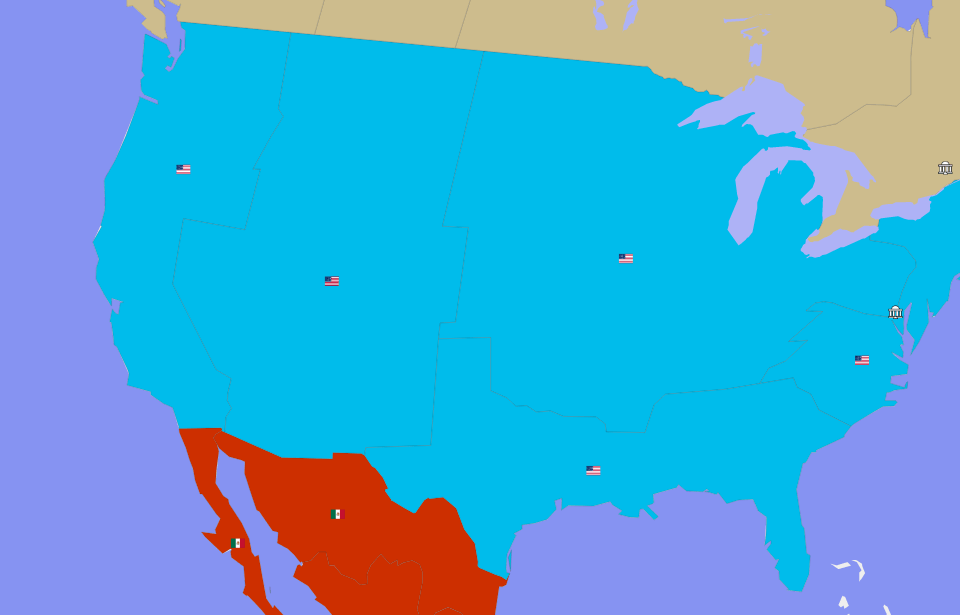
USA as a world power? In E-Sim it is possible!
In E-Sim we have a huge, living world, which is a mirror copy of the Earth. Well, maybe not completely mirrored, because the balance of power in this virtual world looks a bit different than in real life. In E-Sim, USA does not have to be a world superpower, It can be efficiently managed as a much smaller country that has entrepreneurial citizens that support it's foundation. Everything depends on the players themselves and how they decide to shape the political map of the game.
Work for the good of your country and see it rise to an empire.
Activities in this game are divided into several modules. First is the economy as a citizen in a country of your choice you must work to earn money, which you will get to spend for example, on food or purchase of weapons which are critical for your progress as a fighter. You will work in either private companies which are owned by players or government companies which are owned by the state. After progressing in the game you will finally get the opportunity to set up your own business and hire other players. If it prospers, we can even change it into a joint-stock company and enter the stock market and get even more money in this way.
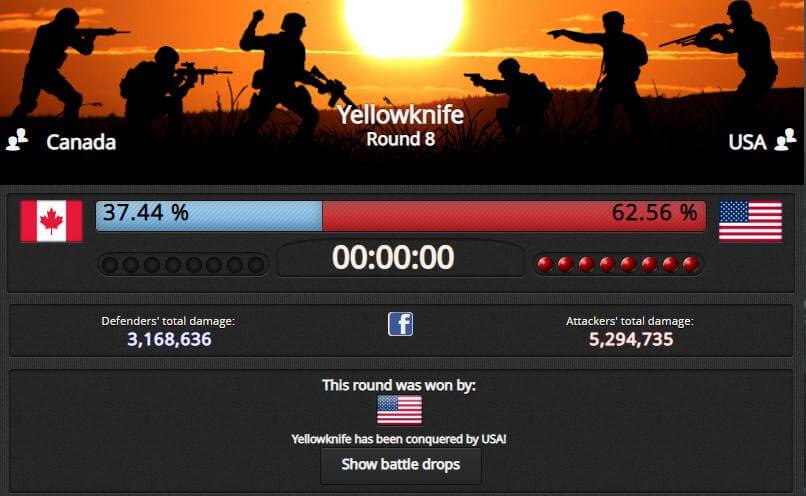
In E-Sim, international wars are nothing out of the ordinary.
Become an influential politician.
The second module is a politics. Just like in real life politics in E-Sim are an extremely powerful tool that can be used for your own purposes. From time to time there are elections in the game in which you will not only vote, but also have the ability to run for the head of the party you're in. You can also apply for congress, where once elected you will be given the right to vote on laws proposed by your fellow congress members or your president and propose laws yourself. Voting on laws is important for your country as it can shape the lives of those around you. You can also try to become the head of a given party, and even take part in presidential elections and decide on the shape of the foreign policy of a given state (for example, who to declare war on). Career in politics is obviously not easy and in order to succeed in it, you have to have a good plan and compete for the votes of voters.
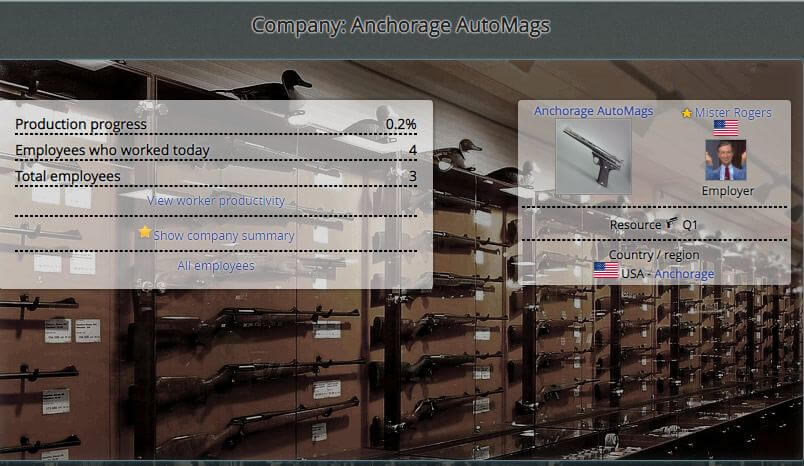
You can go bankrupt or become a rich man while playing the stock market.
The international war.
The last and probably the most important module is military. In E-Sim, countries are constantly fighting each other for control over territories which in return grant them access to more valuable raw materials. For this purpose, they form alliances, they fight international wars, but they also have to deal with, for example, uprisings in conquered countries or civil wars, which may explode on their territory. You can also take part in these clashes, although you are also given the opportunity to lead a life as a pacifist who focuses on other activities in the game (for example, running a successful newspaper or selling products).
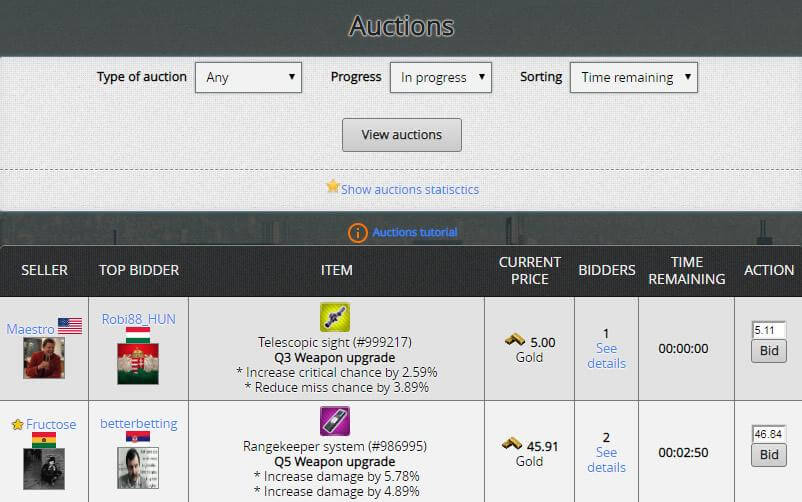
At the auction you can sell or buy your dream inventory.
E-Sim is a unique browser game. It's creators ensured realistic representation of the mechanisms present in the real world and gave all power to the players who shape the image of the virtual Earth according to their own. So come and join them and help your country achieve its full potential.
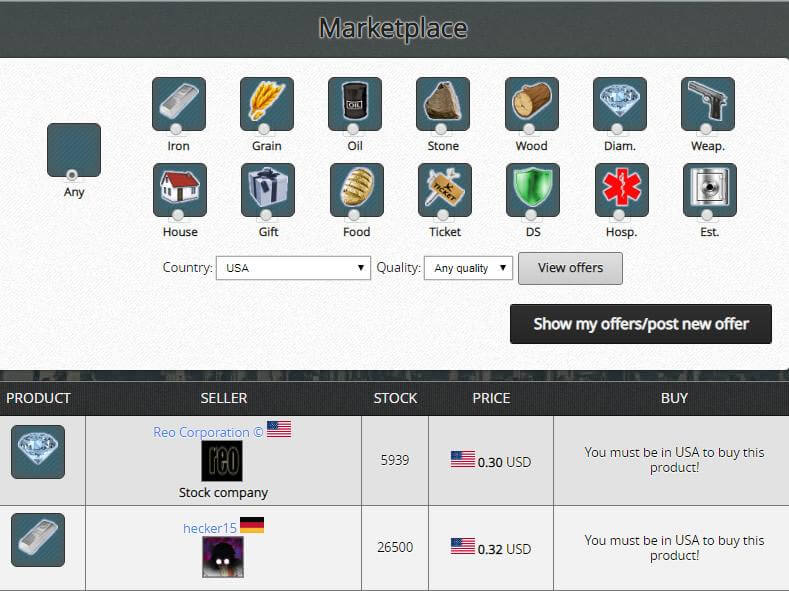
Invest, produce and sell - be an entrepreneur in E-Sim.
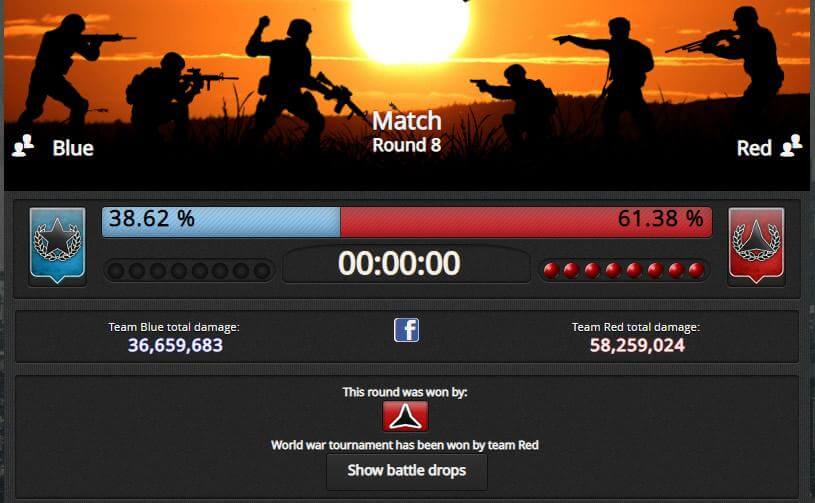
Take part in numerous events for the E-Sim community.

